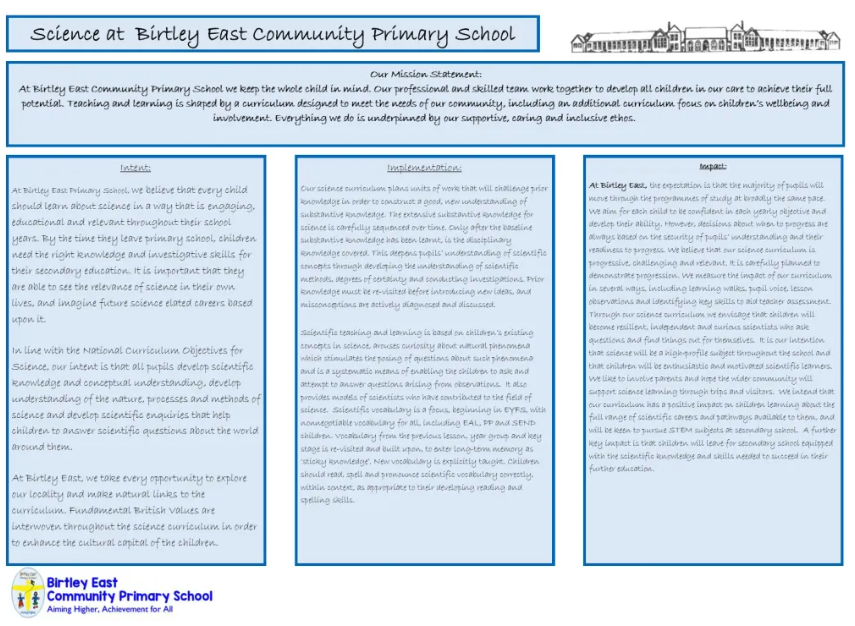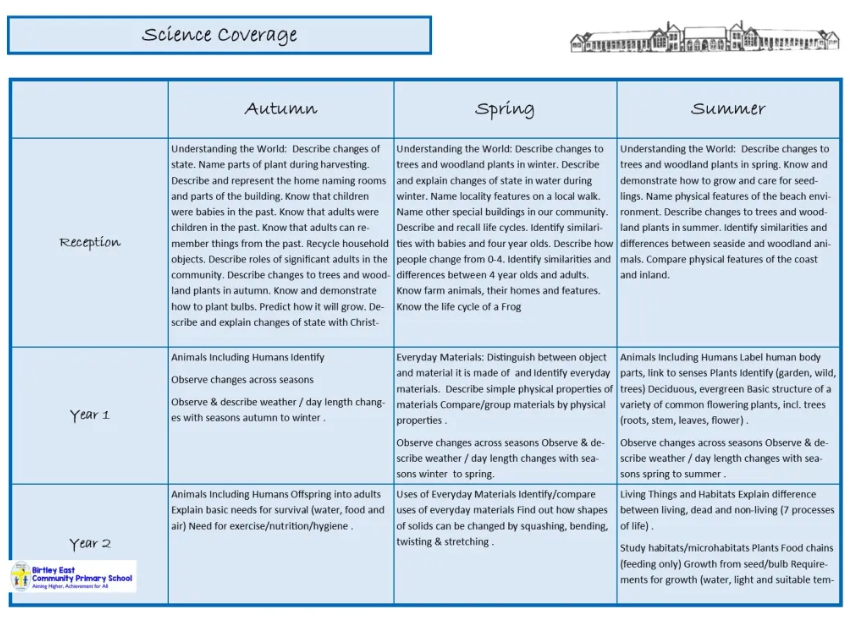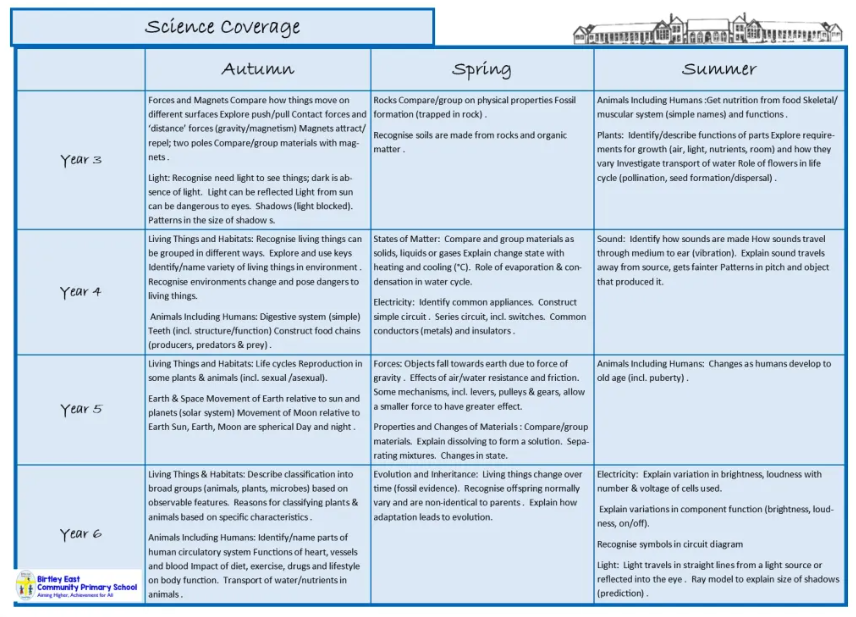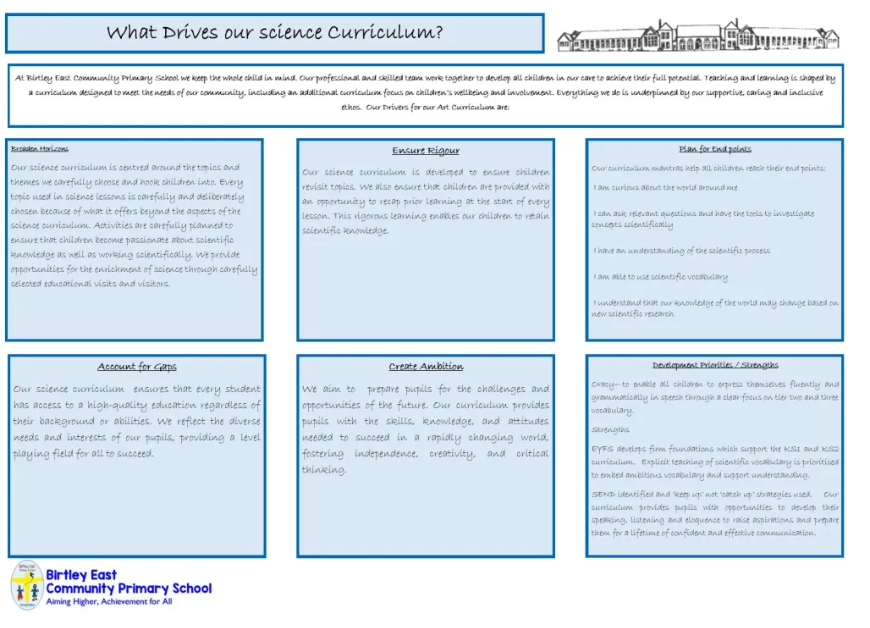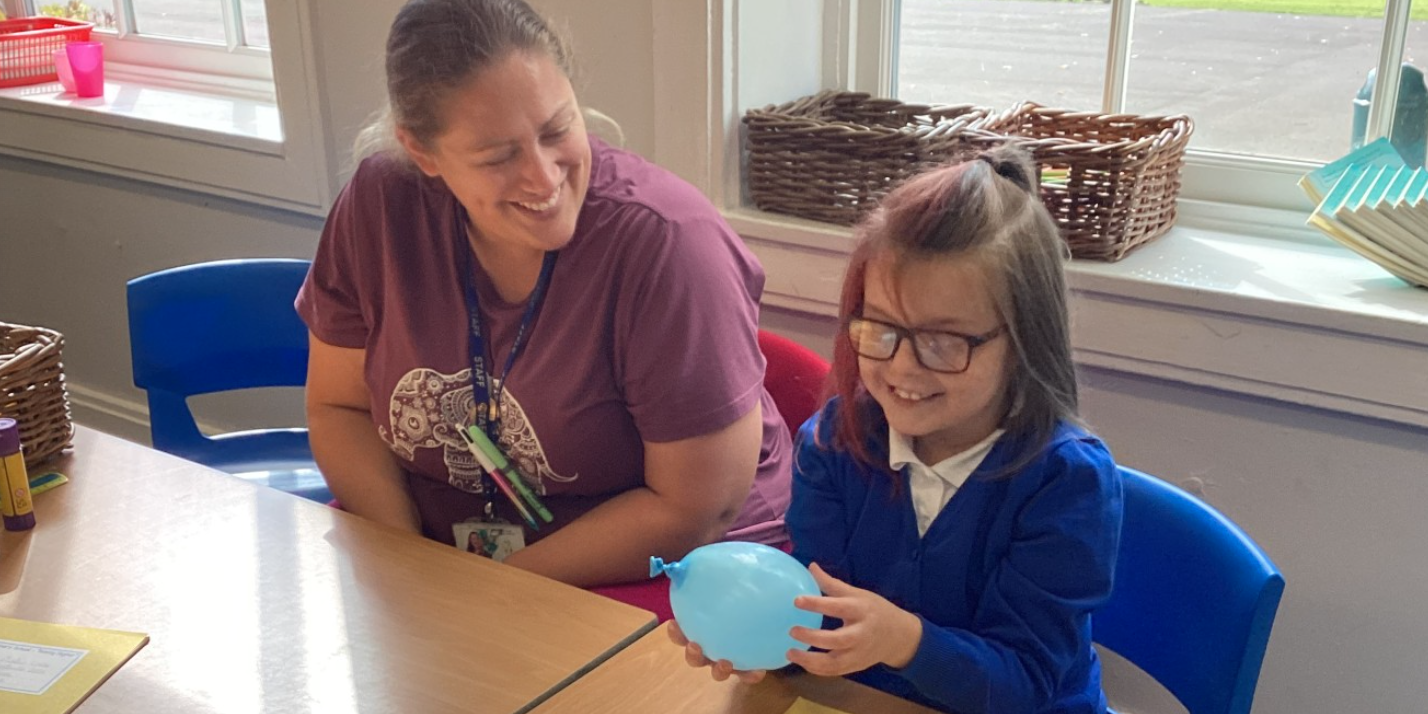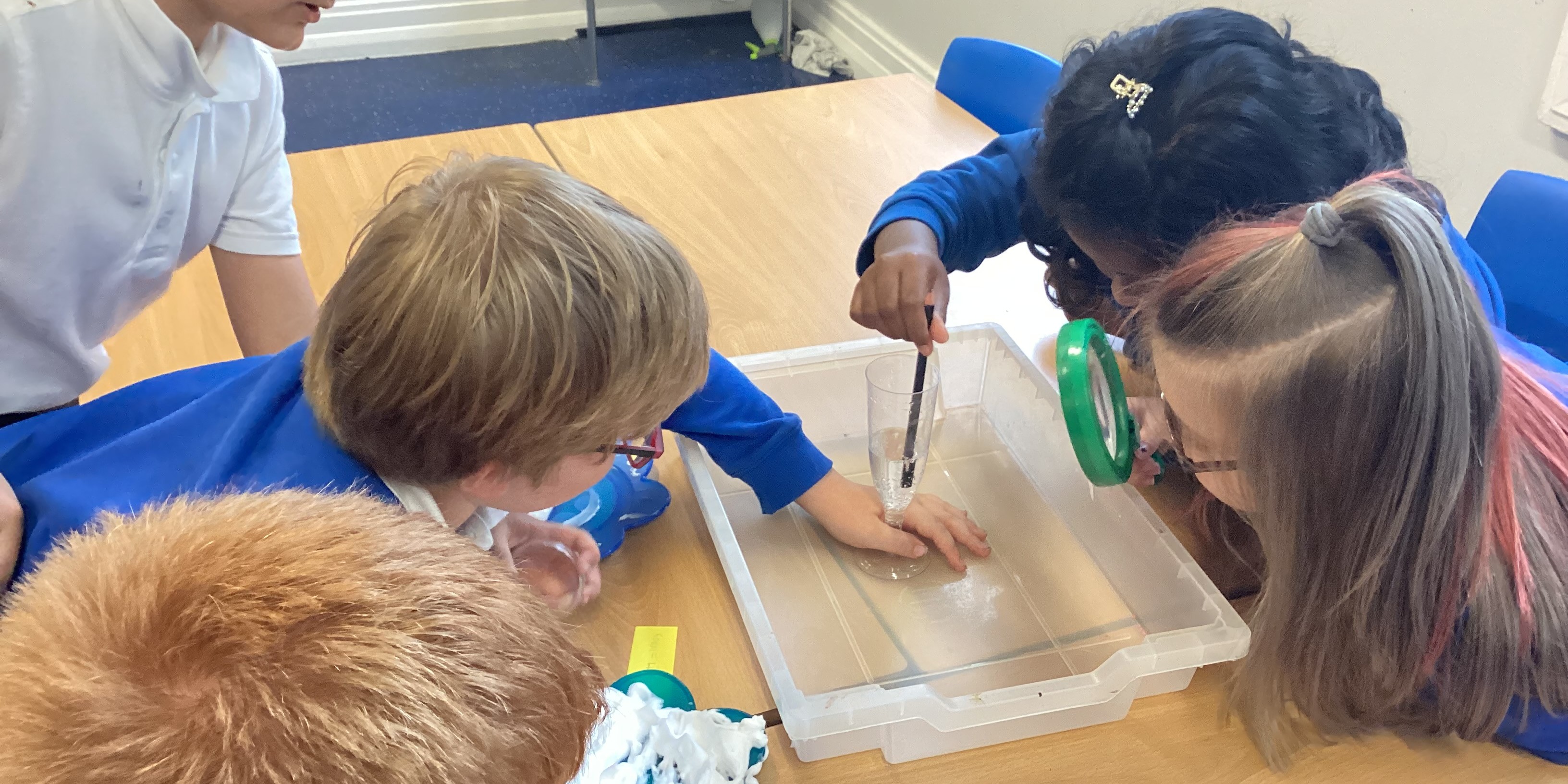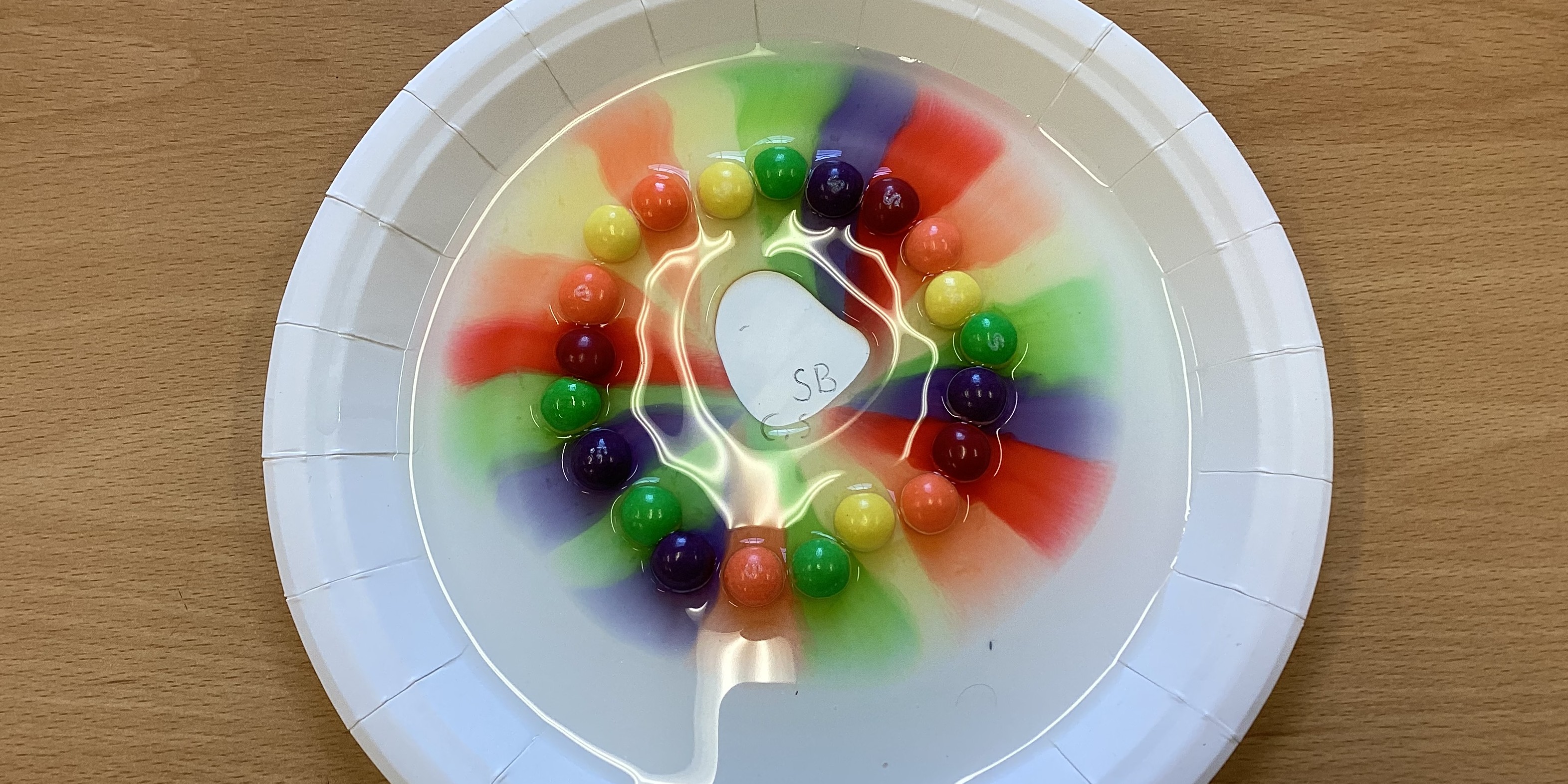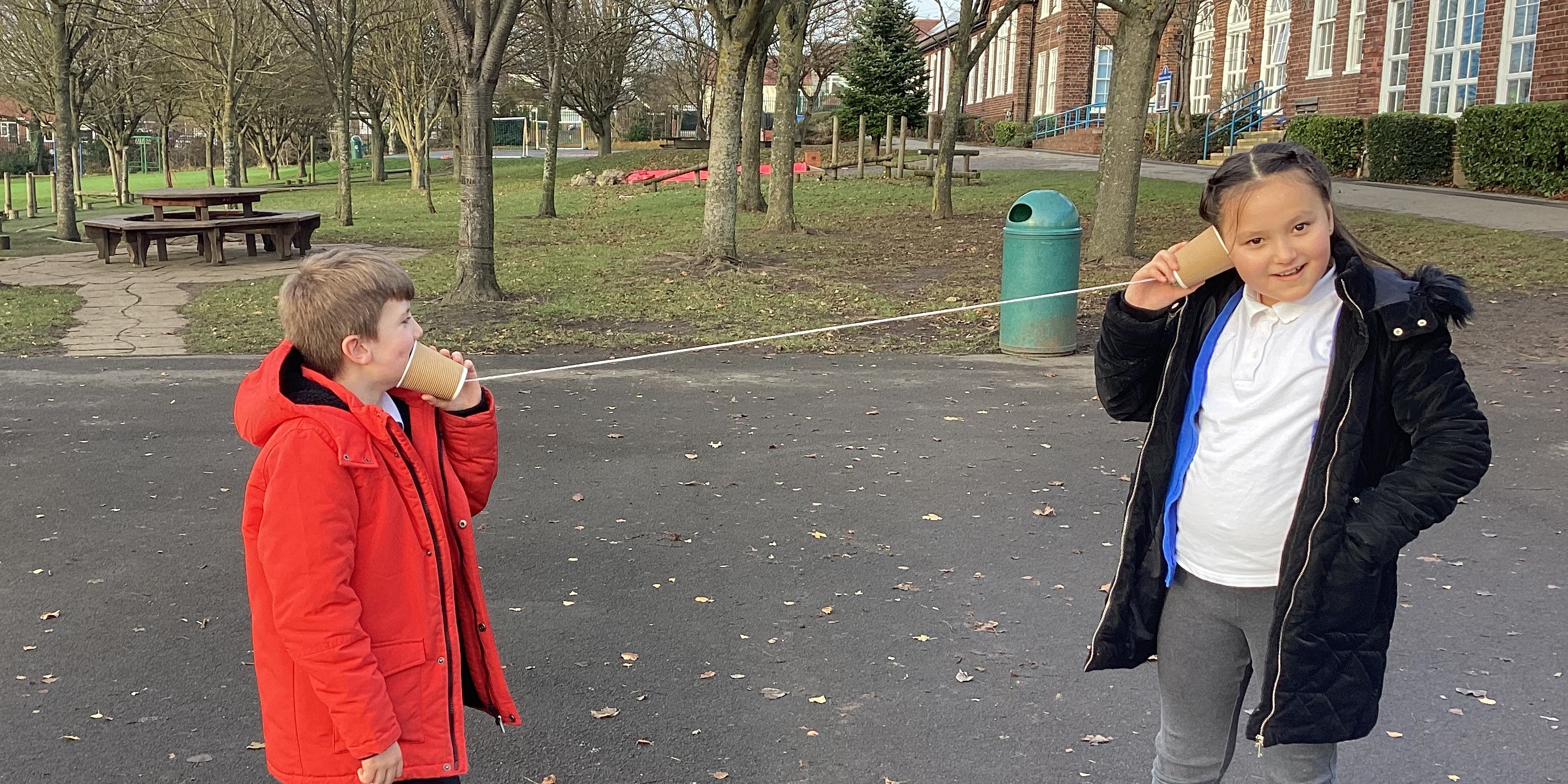The Science Curriculum at Birtley East Primary School
Science Curriculum rationale:
The EYFS and National Curriculum for Science aims to ensure that all pupils:
• Develop scientific knowledge and conceptual understanding through the specific disciplines od biology, chemistry and physics
• Develop an understanding of nature, the natural world, processes, the wider world and methods of science through different types of science enquiries that help them to answer scientific questions about their own locality and the world around them
• Are equipped with the scientific knowledge required to understand the uses and implications of science, today and in the next phase of their education.
Science teaching at our school provides the foundations for understanding the world through the specific disciplines of primary biology, chemistry and physics. Through the statutory National Curriculum children are taught knowledge, methods, processes and the uses of everyday science in the world around them. Through building up a body of sequenced, key knowledge and concepts through whole school coverage mapping, children are encouraged to recognise the power of rational explanation and develop a sense of excitement, wonder and curiosity about natural phenomena. Scientific misconceptions and pupil-led investigations are explored. Pupils are encouraged to understand how science can be used to explain what is occurring, predict how things will behave, and analyse causes and scientific reasoning. Working scientifically in Science is weaved into the curriculum from Nursery to Year 6 throughout all long and medium term planning. Your child will take part in a wide range of scientific investigations linked to key lines of enquiry where they must plan and carry out science investigations to develop essential scientific enquiry skills.
Engaging, sequenced science lessons should truly excite our children’s wonder and curiosity in the world around them. Appropriate sequencing and coverage coherence has taken into account the substantive knowledge, vocabulary and skills pupils need to learn, before carrying out practical investigations. Coverage, knowledge and progression is mapped out throughout the school and across key phases. In addition, in science the ‘working scientifically’ aspect of the curriculum will also include: observing over time; pattern seeking; identifying, classifying and grouping, comparative and fair testing and research using secondary sources.
All bespoke units of work are enhanced through outdoor learning in the extensive school grounds, local community, visitors from the science world and visits to local Science museums and STEM industries e.g. Nissan, Safety Works.
The school leads a BSE British Science Week annually and has also been awarded the ASE Primary Science Quality Mark Award. In addition the school also holds a weekly Robotics club who competed In January 2024 at the local Nissan plant in Sunderland.
Our science curriculum is accessible to all pupils through careful ongoing scaffolding and adaptations. Quality First teaching will always be used first to ensure that all children have access to the schools science curriculum. It is intended that all pupils will leave Birtley East primary school confident, curious scientists who possess an excellent knowledge and understanding of scientific concepts and robust working scientifically skills.
Our school Science Leader monitors teaching and learning and takes actions to ensure every child achieves highly in science. All staff are supported to become confident science teachers through ongoing planning support, Science hub networking events, Gateshead science cluster events and ensuring regular access to science CPD.
Article 28 You have the right to education.
Article 29 You have the right to education which tries to develop your personality and abilities as much as possible and encourages you to respect other people’s rights and values and to respect the environment.
The images below show an overview of our approach to science teaching and learning, these images are also available as a word document via this link:

